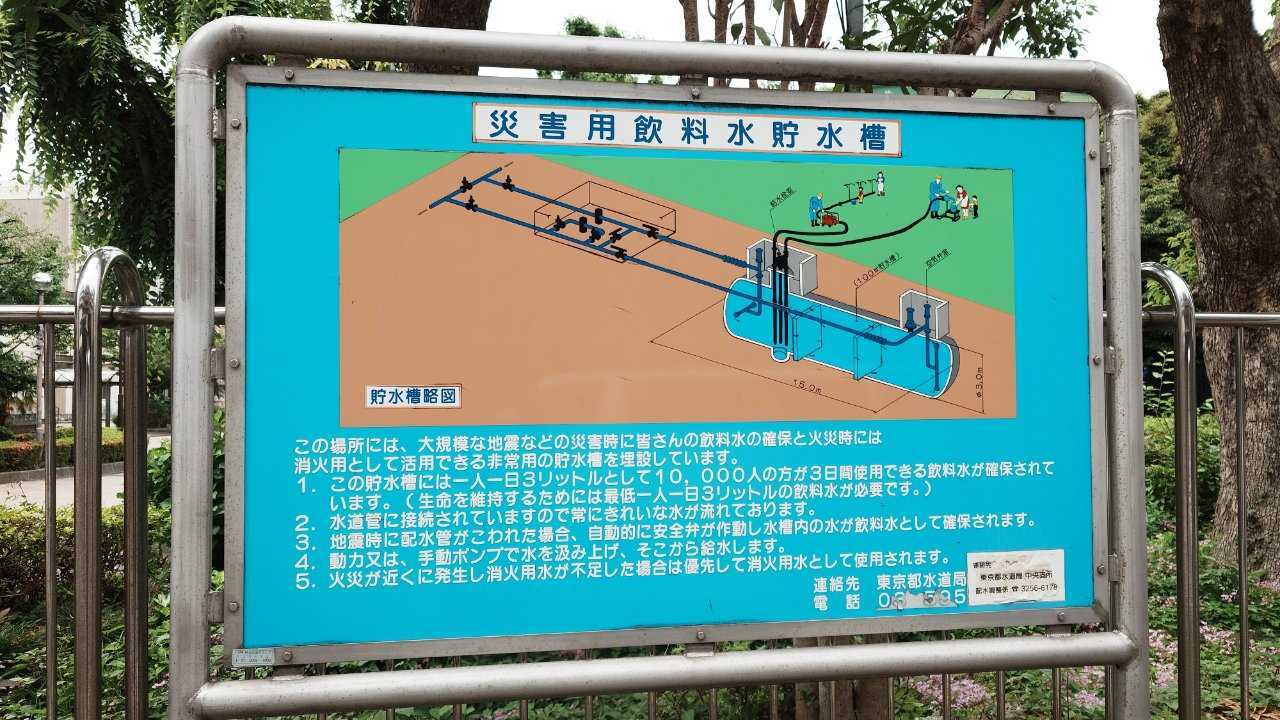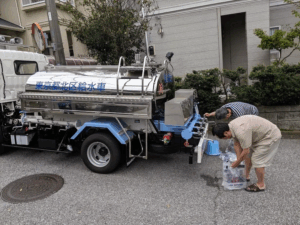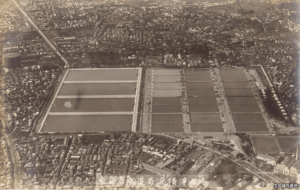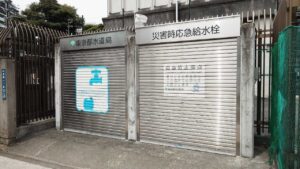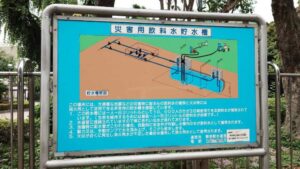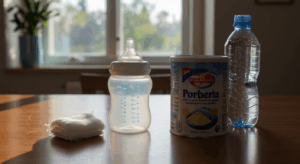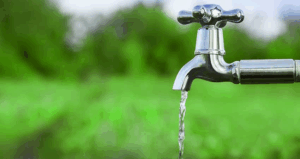Complete Guide to Emergency Water Supply Stations During Disasters
── How to Find, Line Up, and Carry Water + Local Disaster Wells and Firefighting Water Tanks ──
What You’ll Learn from This Article
- How to locate nearby water supply stations in just 1–2 minutes
- Differences by station type and “when & how much” water is available
- The current status of disaster wells and firefighting water tanks not classified as water stations
- The ideal tank size and a guideline for how much weight you can carry in one trip
1. How to Find Emergency Water Supply Stations
| Method | Time Required | Steps |
|---|---|---|
| ① Tokyo Disaster Prevention Map (PC/Smartphone Browser) Also accessible via the “Tokyo Disaster Map” link at the bottom of the Tokyo Disaster Prevention App | 2 minutes | 1) Open the Tokyo Disaster Prevention Map 2) Enter the address in the bar at the top right 3) Adjust zoom using the +/- buttons at the bottom right |
| ② Tokyo Waterworks Bureau App “Tokyo Water” (iOS / Android) | 1 minute | 1) Launch app → “Menu” → “Emergency Water Supply Stations” 2) Search by (1) entering an address, or (2) using current location 3) Check the list displayed at the bottom to find your desired station. Tap “Download” to get a detailed A4 PDF sheet with information |
Quick Tip
・If no stations are pinned within a 15-minute walk, check adjacent municipalities.
・PDF List (Tokyo Waterworks Bureau “Reference Material 10”) is useful to save offline in case of network failure.
2. The Three Types of Water Supply Stations
| Type | Storage Capacity | Installation Interval | Start Time* | Operating Hours |
|---|---|---|---|---|
| A: 100 m³ Underground Tank | 100 m³ | Approx. 2 km* | 4–6 hours after disaster | Includes nights & holidays |
| B: 1,500 m³ Large Tank | 1,500 m³ | Approx. 2 km* | 4–6 hours after disaster | Includes nights & holidays |
| C: Main Water Distribution Facility | Larger than above (up to tens of thousands m³) | Tokyo Waterworks Bureau facilities | 4–6 hours after disaster | Includes nights & holidays |
* According to the Tokyo Waterworks Bureau, supply stations operate “including nights and holidays,” though specific times may vary based on facilities and disaster conditions.
* Stations may get crowded in the early morning and evening—outside normal working hours.
* Per the Bureau, there is approximately one station every 2 km.
* The guideline of 3L/day/person can cover about three weeks of basic needs. The Bureau states there is no strict limit on water volume per person, though in certain cases (e.g., hospital support), general supply may be restricted at some stations.
Observing Water Supply Stations
I visited three types of water supply stations near my home. Since it wasn’t during a disaster, no water was being distributed, and I couldn’t examine the faucet structure.
A. 100 m³ Type (Only a sign was visible; access restricted due to being on high school grounds)
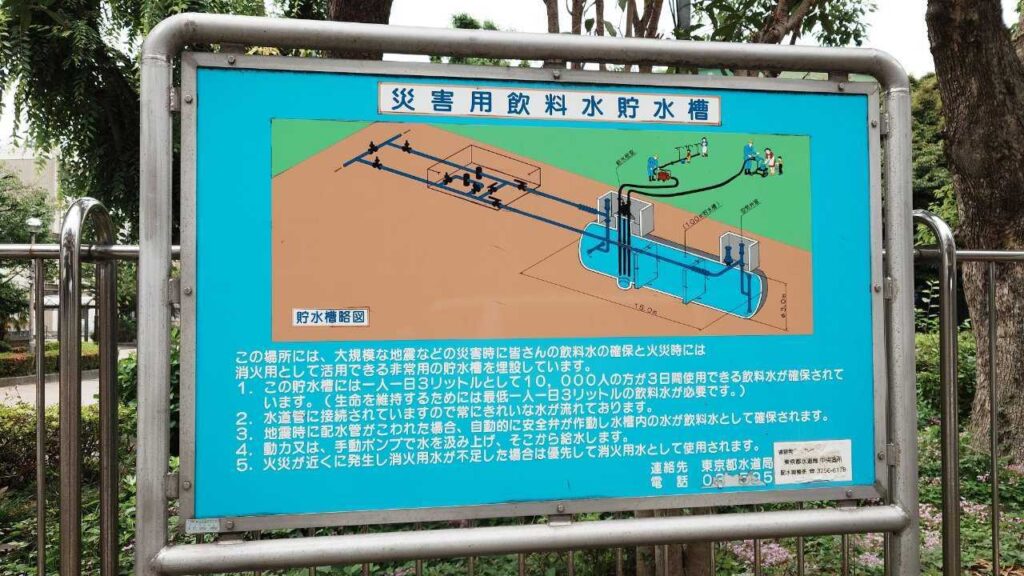
B. 1,500 m³ Type (Capable of water supply even during power outages via generator or engine pump)
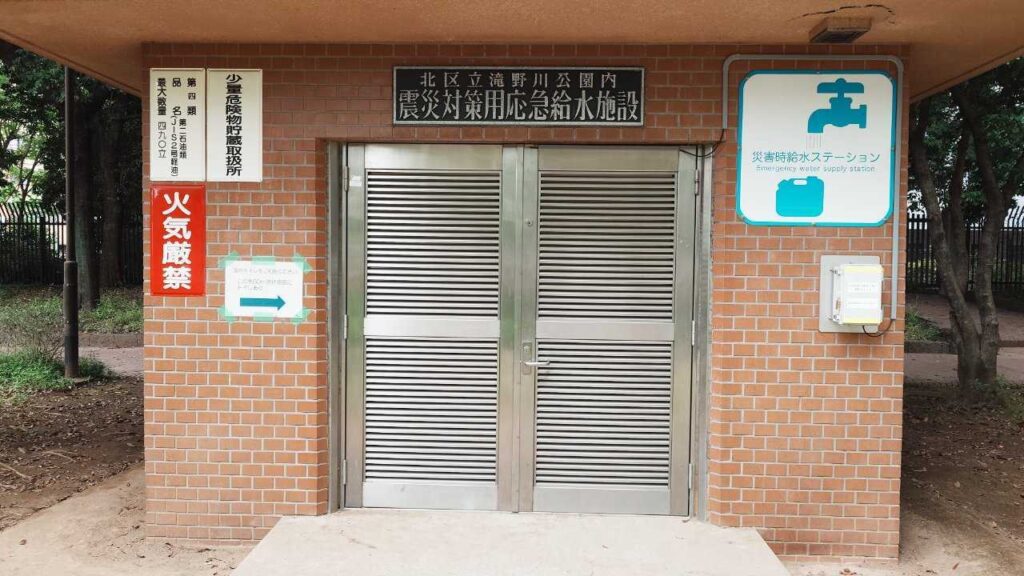
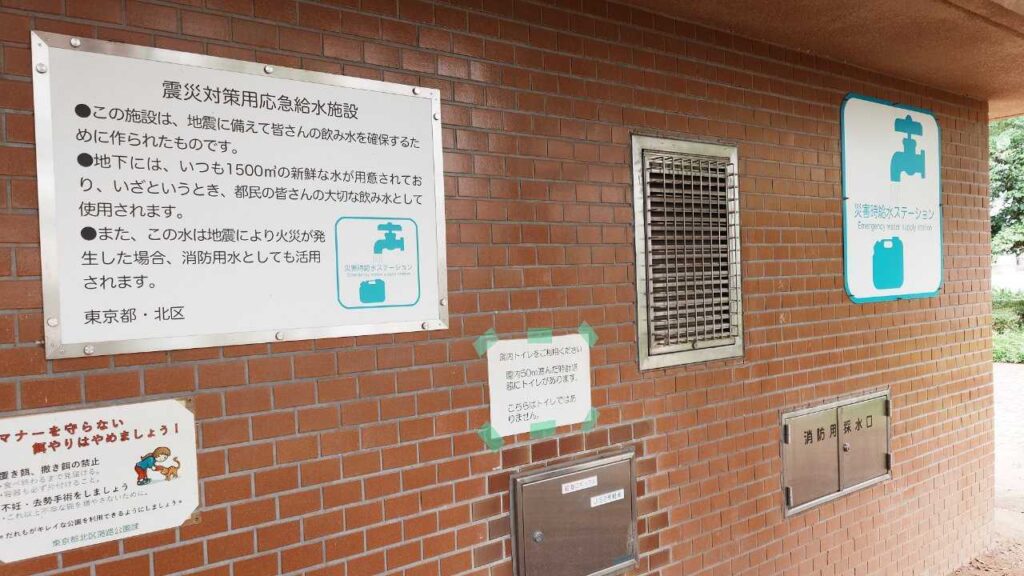
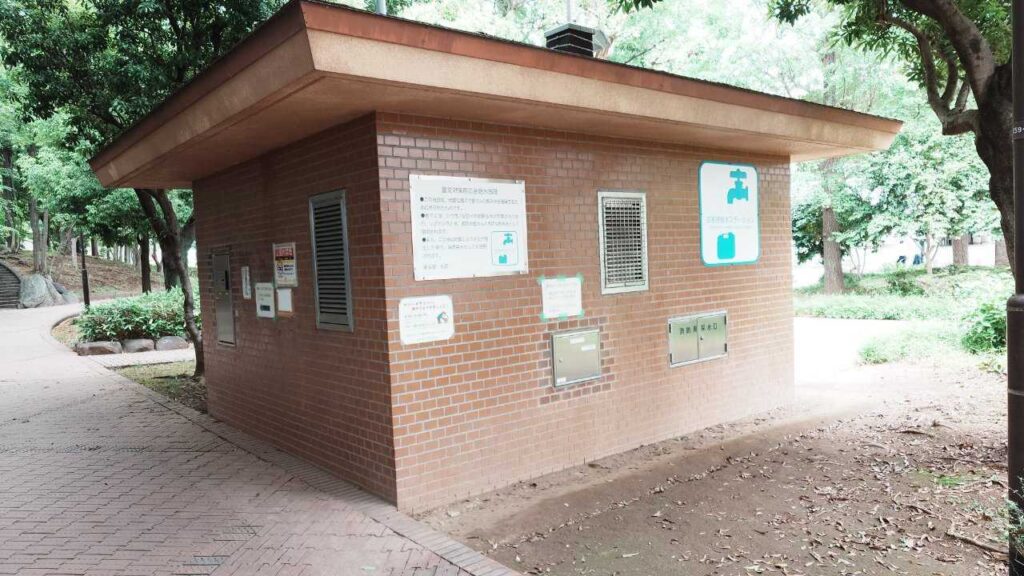

The emergency supply valve likely connects to temporary outdoor faucets via hoses, allowing water to be drawn from 4–6 outlets at once.
C. Distribution Facility Type
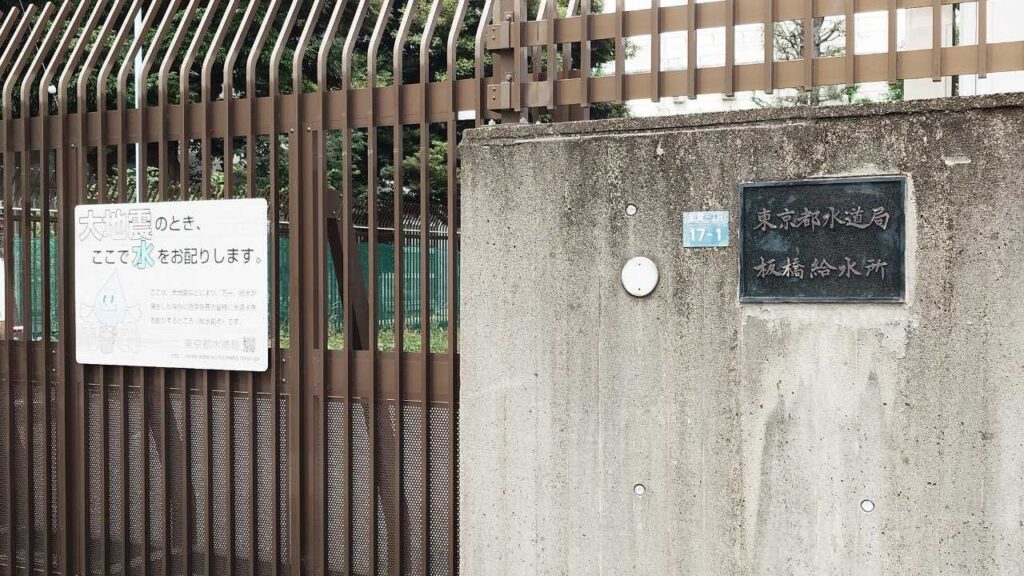
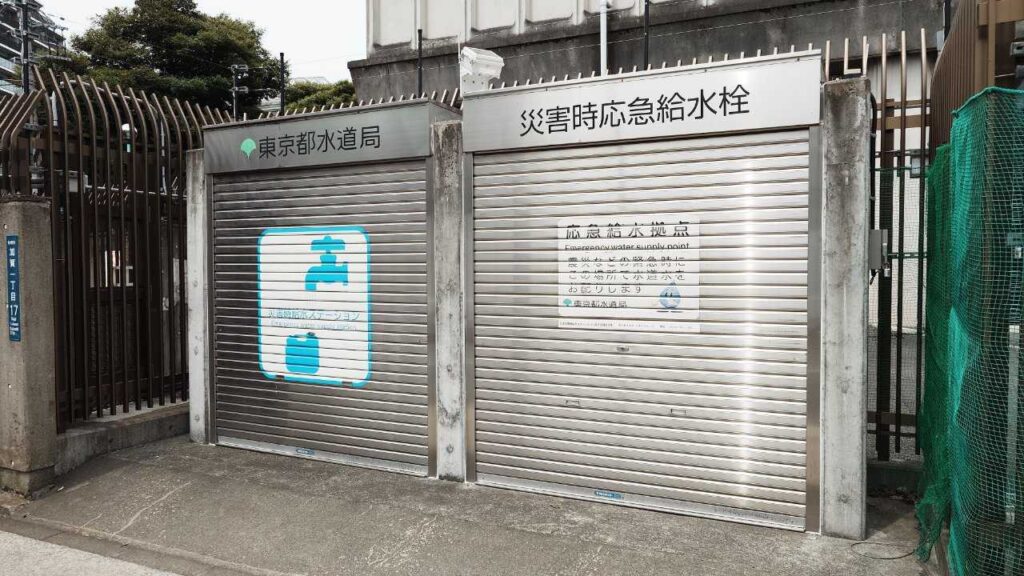
The sidewalk is immediately in front of the shutter, so it seems difficult to set up outdoor temporary faucets. It’s likely there are 4 to 6 faucets behind the shutter (2–3 per side).
3. Local Emergency Water Sources: Disaster Wells & Firefighting Water Tanks
Separate from supply stations, disaster wells and firefighting tanks are also marked on local hazard maps. As an example, here is Toshima Ward’s disaster map (click to view in a new window).

In this map, disaster wells are shown with light blue ●, and firefighting tanks are marked with ■.
I checked around 10 locations each for nearby disaster wells and firefighting tanks. The results were as follows—possibly due to poor location access:
- Disaster Wells: Estimated 5% functional
Out of 7 locations visited, only one could be identified (on temple grounds, and even then, the pump seal was broken). Many are on private property and inaccessible. These wells may have been removed or fallen into disuse without updating the maps. Hand pumps used in Japan can dry out and lose functionality unless regularly maintained. - Firefighting Tanks: Estimated 30% functional
Out of 10, three were clearly found. Some were within large apartment complexes. Confirmed tanks had metal covers labeled for firefighting use and are likely maintained by local fire organizations. - Conclusion: Disaster well markings are not very reliable. Firefighting tanks are easier to locate, but without communication or cooperation with the local fire brigade, it’s unclear when they can be accessed for water.
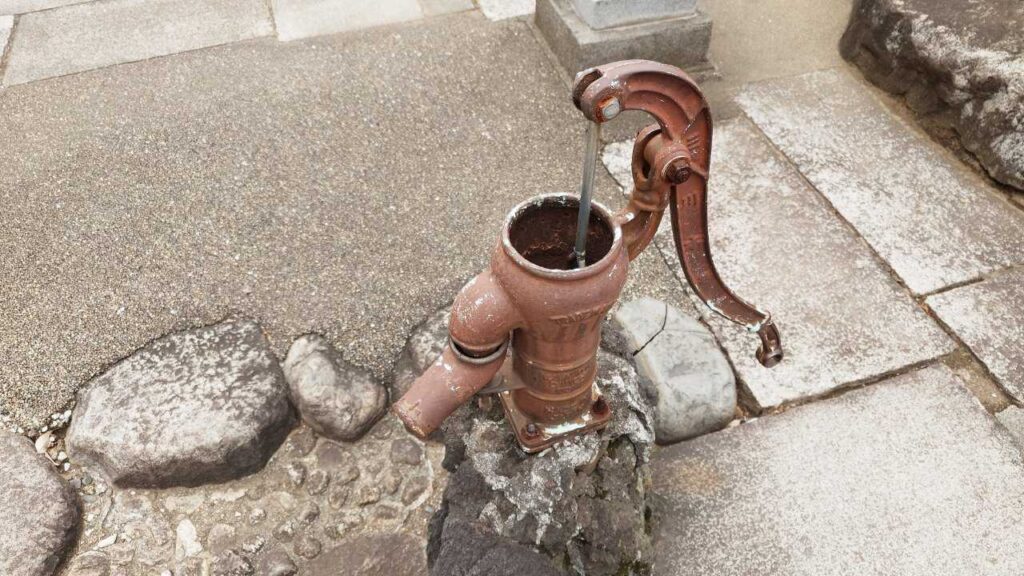
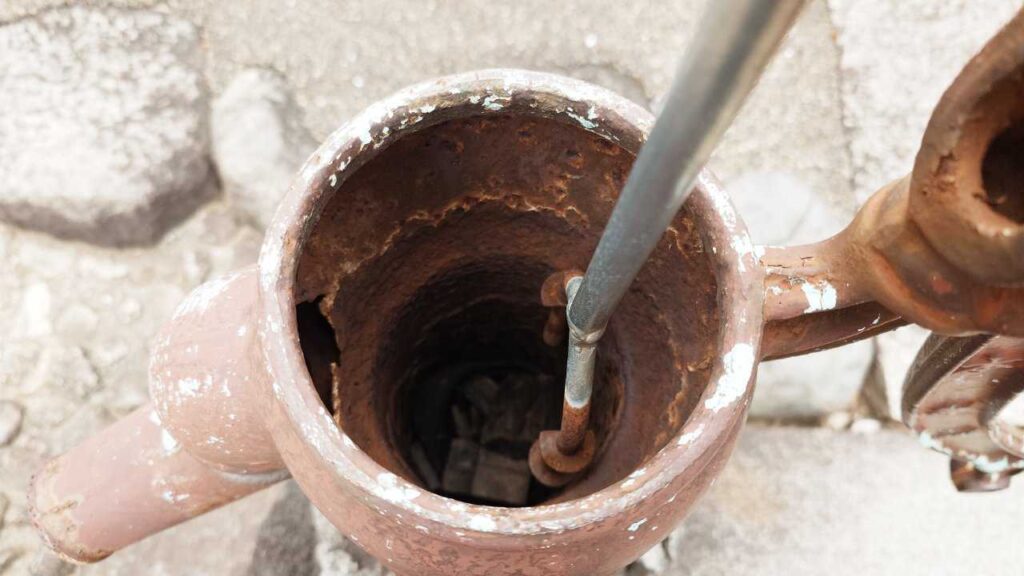
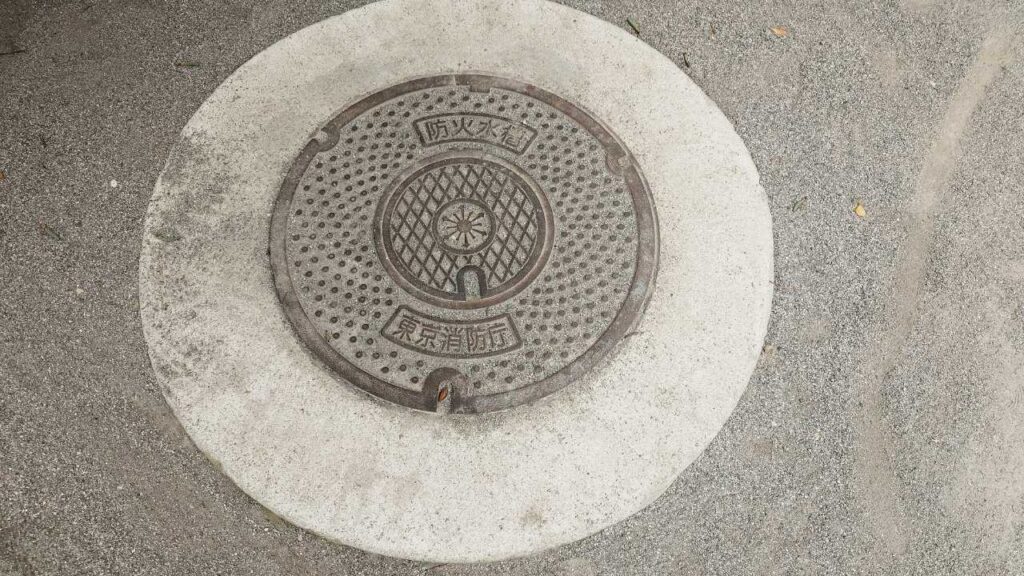
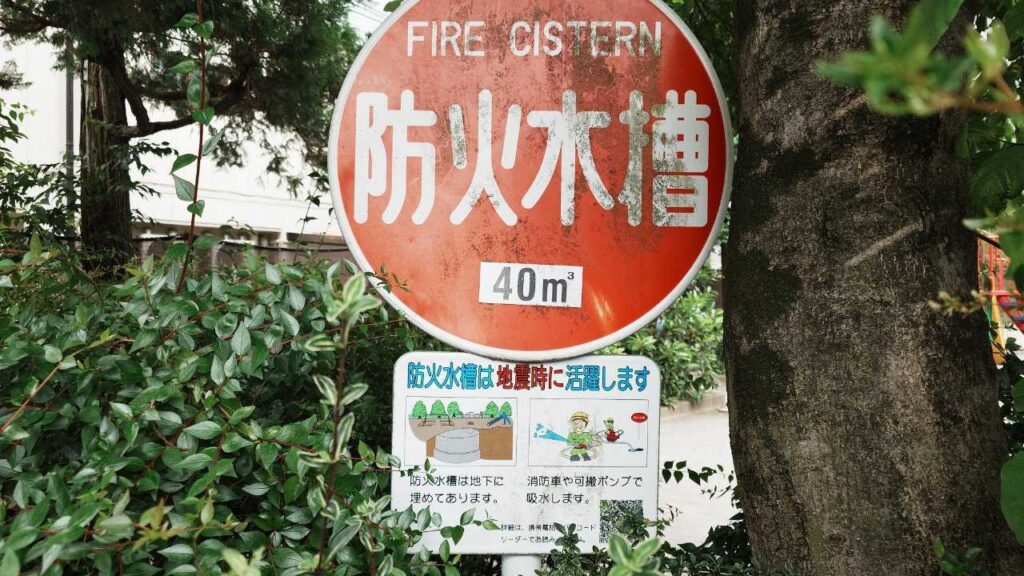
4. Four Types of Water Tanks to Keep Ready
Depending on the usage scenario and portability, here are four types of water tanks. I’ve personally tried all of them, and each has its own merits.
| Size | Full Weight | Best Use | Reference Link |
|---|---|---|---|
| 10 L | 10 kg | One in each hand for adult men | YAMAZEN Folding Water Tank 10L |
| 5 L | 5 kg | Suitable for elderly or children | Captain Stag 5L Water Tank |
| 2 L | 2 kg | Compact and foldable. Fits in backpack or handbag | Evernew 2L Model |
| 1 L | 1 kg | Can be tucked into a bag for quick refill trips after work | Evernew 900ml Foldable Model |
Summary — Emergency Water Supply Stations Are the Most Reliable, So Check Ahead
- During a water outage, emergency water supply stations are the most reliable way to get water
- Find and check the closest station in advance
- Suggested tank setup: two 10L tanks for men, or two 5L tanks for women; small 1L/2L containers fit well in backpacks
- Disaster wells and firefighting tanks are not very reliable—consider them as bonuses
Next up: “Surviving on 20L a Day! Realistic Water-Saving Tips for Bathing, Toilets, and Cooking”
We’ll share tips from disaster relief workers who lived with minimal water for months in real disaster zones. Stay tuned!
